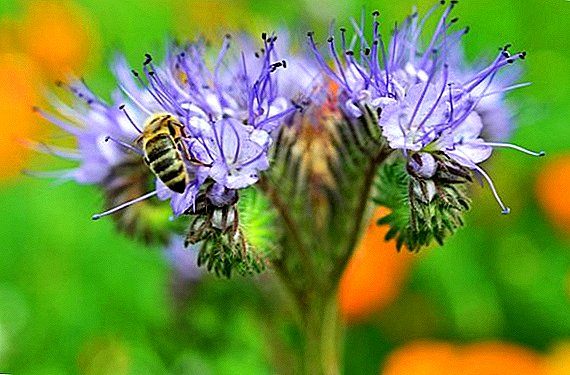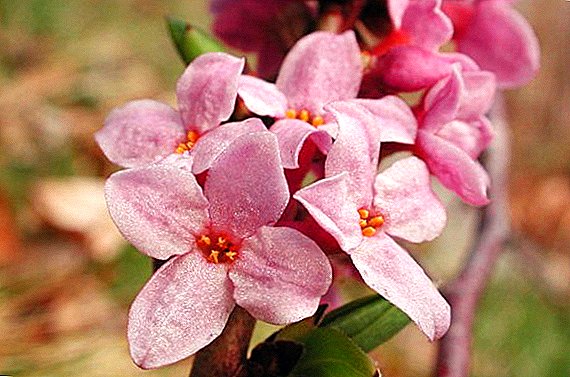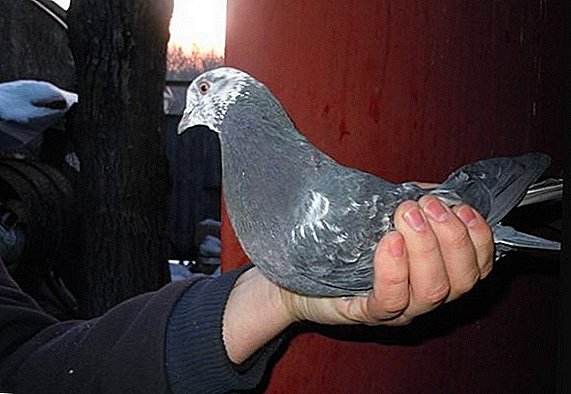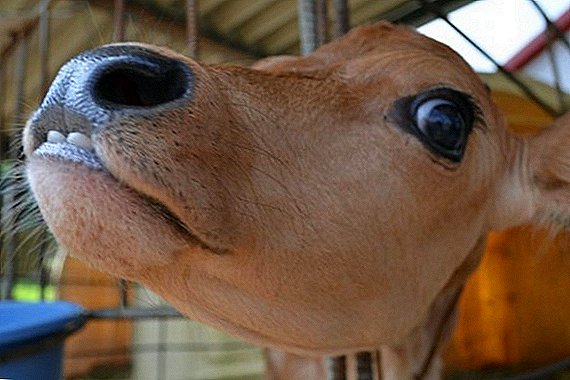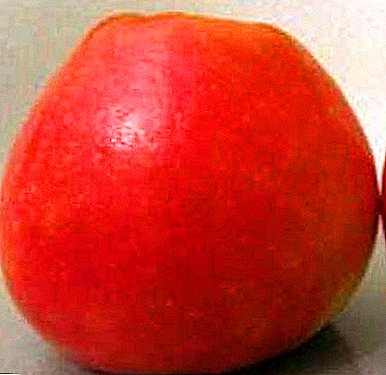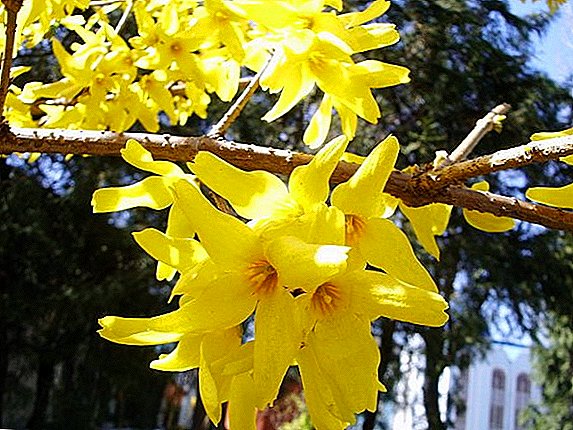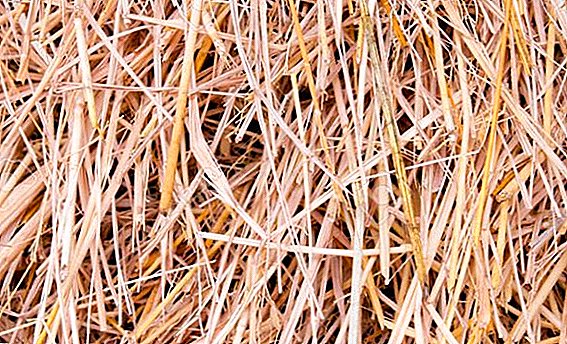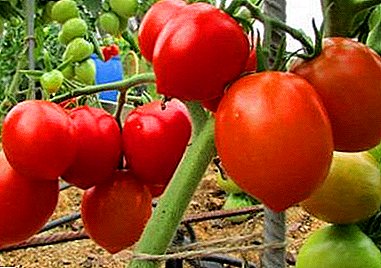
How to sow tomato seedlings on seedlings? This question was asked to every gardener who decided to grow tomatoes, as they say, from scratch. The process seems simple enough, but without knowing the important features, it will be difficult to grow a rich crop of tomatoes.
The process will require diligence and patience, but even a novice summer resident will be able to master it. In this article we will try to analyze the whole process of planting in as much detail as possible so that even the beginner will understand everything and he will understand how to plant tomatoes.
General recommendations for planting tomatoes at home
When growing seedlings at home determining the exact date of sowing seeds is of paramount importance, otherwise, by the time the tomatoes are planted in the ground, the seedling material will be either still weak or already overgrown.
The time when planting tomatoes depends on the latitude and weather conditions. Therefore, most often:
- in the southern regions of Russia sow tomatoes from February 20 to March 15;
- in the central regions - from March 15 to April 1;
- in the northern regions (Siberia, the Urals) - from April 1 to 15.
Before sowing seeds, it is necessary to foresee where the seedlings will grow.. It is better if they are windowsills of south or southwest windows. It is possible that in bad weather conditions (constant cloudiness) the need for additional lighting of seedlings will be required, therefore a fitolamp should be purchased.
Seed selection
 The selection of seeds should be approached responsibly. It is desirable to purchase them in specialized stores or from sellers who have all the necessary documents to guarantee the quality of the goods. You should not buy on street trays or in transitions: similar conditions for storing seeds are not up to standard (temperature, humidity, etc.).
The selection of seeds should be approached responsibly. It is desirable to purchase them in specialized stores or from sellers who have all the necessary documents to guarantee the quality of the goods. You should not buy on street trays or in transitions: similar conditions for storing seeds are not up to standard (temperature, humidity, etc.).
Before you go for seeds, you need to decide: which tomatoes should you buy (tall or short), which varieties to prefer, what amount of seed will be needed. Naturally, all conclusions are drawn based on the characteristics of the backyard plot or greenhouse (area, soil composition, etc.).
The store should pay attention to the manufacturer, and most importantly - for the period of storage. Seeds, which are more than two years old, it is better not to buy. If there are no other options, then the planting material will need to be carefully inspected and rejected of poor quality.
Successfully cope with this task will help the following way:
- in 1 liter of water to mix 30 - 40 grams of salt;
- immerse the purchased seeds in the resulting solution for 10 minutes;
- seeds that surface to the surface should be thrown away, and those drowned should be selected and rinsed with clean production water.
Rejection should be carried out on the eve of sowing seeds in the ground.
Processing and preparation for disembarkation
Seeds of well-known manufacturers usually do not need additional processing, but the seeds collected by hand or bought on the market, it is better to pre-disinfect.
- This can be done by immersing them in a 1% solution of potassium permanganate (1 g per 100 ml of water) for 20–30 minutes; after the time has elapsed, the seeds must be rinsed with water.
- Another option: for a day, the seed is placed in a 0.5% soda solution (0.5 grams per 100 ml of water).
- You can process the seeds and a solution of liquid Fitosporin (1 drop per 100 ml of water), keeping them in the liquid for 1 - 2 hours.
To increase the percentage of seed germination, they can be kept in a growth stimulant solution (Appin, Zircon, Heteroauxin, etc.); method of breeding and duration of the procedure - according to the instructions. Some gardeners use the folk method: immerse the seed in a solution of aloe juice (1: 1) or honey water (1 tsp per cup of water).
 Sow seeds can be dry and germinated, but the second option is preferable. For germination will need:
Sow seeds can be dry and germinated, but the second option is preferable. For germination will need:
- saucer;
- cloth, gauze or paper towel.
- The fabric is moistened, placed in a straightened form on a saucer, onto it the seeds of one variety are poured out and distributed over the surface, the container is covered with a plastic lid or plastic bag and put in a warm place for 10-12 hours.
- Swollen seeds should be sown immediately.
- You can keep them on a saucer for 3 to 5 days, in which case the seeds should germinate, and you should be extremely careful when planting so as not to break the fragile shoots.
The soil
The main component of the purchased substrate is peatwith high acidity, so experienced vegetable growers add garden soil or universal soil for flowers in a 1: 1 ratio, as well as dolomite flour or chalk (1 - 2 tbsp per 10 l of substrate).
Seedlings grown on the basis of land from their own vegetable garden, when transplanted into open ground, experience less stress, and, consequently, take root easier and faster.
For those who want to prepare a soil mixture with their own hands, you can offer the following options:
- Garden soil, peat, humus are mixed in equal parts, a little ash and complex fertilizer are added to the mixture.
- Peat, turfy land, mullein (4: 1: 0,25). For every 10 liters of the mixture, 3 liters of coarse sand, 10 grams of ammonium nitrate, 1 - 1.5 grams of potassium chloride, 2 - 3 grams of superphosphate are added.
- 1 part of humus, peat, turf land mixed, adding for every 10 liters of the mixture to 1.5 tbsp. ash, 3 tbsp. superphosphate, 1 tbsp. potassium sulfate and 1 tsp urea.
The recommended level of soil acidity is 5.5 - 6.0 pH. The earth must be decontaminated! For this purpose, the soil can be calcined in the oven (+ 180С - + 200С for 30 minutes), shed with boiling water or bright pink solution of potassium permanganate, processed with fungicides according to the instructions.
The soil is usually pretreated, 10 to 12 days before the expected planting date. After disinfection, the soil should be moistened and left at room temperature for the reproduction in it of useful wet organisms.
Capacity Selection
As a container for sowing seeds, you can use special cassettes, peat tablets or pots, as well as improvised means: plastic cups and containers for foodstuffs, shallow boxes, independently knocked out of plates or plywood. In any case, drainage holes in the bottom must be made in all tanks, which will ensure the discharge of excess moisture.
The optimal height of the boxes should be 8-10 centimeters.. You should not prefer too bulky containers, since for the entire period of growth of seedlings they will need to be moved from place to place several times.
Disposable containers do not need disinfection, and used ones should be wiped before use with alcohol.
How to sow?
In peat tablets
This method makes it possible to grow strong and healthy seedlings, bypassing the dive stage. When planting in open ground or in the greenhouse, the plant can be transplanted with a tablet.
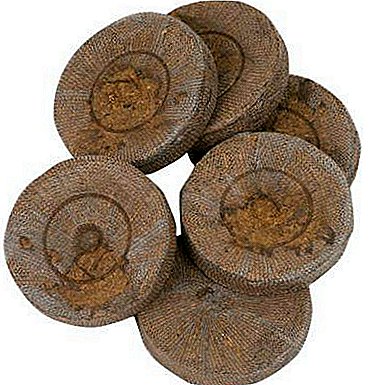 A tablet with a diameter of 4 centimeters to fill in previously warm water for swelling.
A tablet with a diameter of 4 centimeters to fill in previously warm water for swelling.- After draining the excess liquid, place the tablets in a transparent container, the volume of which will hold all the peat products.
- Sow 2-4 seeds of tomatoes in each tablet (if the quality of the seed does not cause doubts, then one can be used). To do this, a small depression is made in the cavity with a finger (1 cm), where the seed is placed.
- From above each deepening is covered with soil or vermiculite.
- The box is covered with a transparent lid or plastic wrap.
- Capacity is placed in a warm (+ 23C - + 25C) place.
Watch a useful video about growing seedlings of tomatoes in peat tablets:
In a container or other container
 The classic method of sowing, which provides for the stage of diving on individual tanks.
The classic method of sowing, which provides for the stage of diving on individual tanks.
- At the bottom should be poured a layer of drainage with a thickness of 0.5 cm (small pebbles, eggshell).
- Soil 8 - 10 cm thick is poured into the tank, it is well moistened with warm water.
- Grooves with a depth of 1 cm are made on the surface, the distance between them is 3-4 cm.
- Seeds razlazhivayutsya on grooves at a distance of 1 - 2 cm, sprinkled on top of the soil and moistened with a spray.
- The container must be covered with glass or a lid, then placed in a warm (+ 25C - + 30C) place.
We offer to watch a video about growing tomato seedlings in a classic way:
Sowing in the "diaper"
This method will make it possible to save space: a large amount of seedling material can be grown on a relatively small area.
 Polyethylene must be cut into strips 10 cm wide, the length of the strips is optional.
Polyethylene must be cut into strips 10 cm wide, the length of the strips is optional.- Toilet paper or kitchen paper towel, which is placed on top of the film, is cut into strips of the same size.
- The paper layer should be moistened with a growth stimulant solution.
- Seeds should be spread out on paper (closer to one of the edges) at a distance of 3 - 4 cm.
- On top of the seeds are covered with another layer of paper and plastic film.
- The resulting tape must be twisted into a roll and placed in a plastic cup. To save space in one glass, you can put several rolls at once.
- Water should be poured at the bottom (1-1.5 cm), cover the tank with a plastic bag with holes for aerating the air and place in a warm place.
Watch the video about planting tomato seedlings in the “diaper”:
Of course, you can buy ready-made seedlings, but the taste of tomatoes grown from seeds with their own hands is much sweeter and tastier.


 A tablet with a diameter of 4 centimeters to fill in previously warm water for swelling.
A tablet with a diameter of 4 centimeters to fill in previously warm water for swelling. Polyethylene must be cut into strips 10 cm wide, the length of the strips is optional.
Polyethylene must be cut into strips 10 cm wide, the length of the strips is optional.